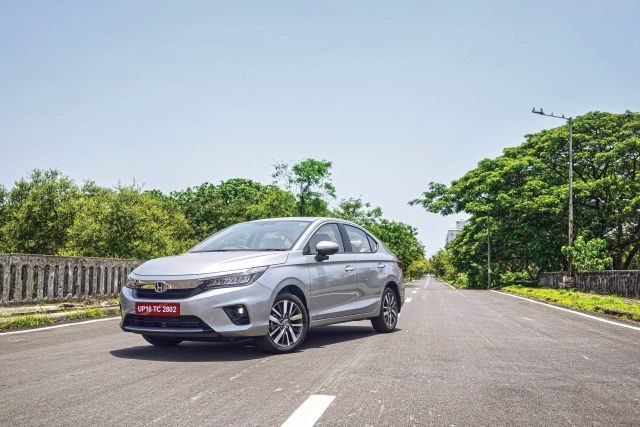
Twenty two years after we were first introduced to the game-changing Honda City, the fifth-iteration of this popular sedan is here to take on all challengers.
Story: Anosh Khumbatta
Photography: Saurabh Botre
With over two decades behind it the Honda City is one of the longest-running car badges in our market, with timely updates and fresh models keeping it relevant in an ever-changing landscape. Competitors have come and gone over the years, the advent of crossover SUVs and sub-four-metre sedans have eaten into C-segment sales, but through it all, the City endures, continuing to be one of the best-selling sedans in our market.
For 2020 we get the fifth-generation Honda City, which builds on the outgoing model’s strengths with an eye-catching design, class-leading interior space and excellent driving dynamics. The car is being offered with either 1.5-litre petrol or 1.5-litre diesel powerplants, and I recently spent a day with the top-end ZX variant of the petrol-powered City, equipped with the optional CVT automatic.
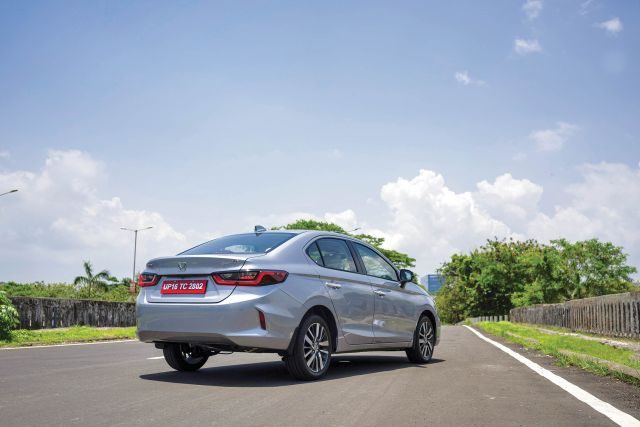
The design of the new Honda City is clearly an evolution of the fourth-generation car, retaining the broad chrome strip running across the nose, and a familiar side profile. Headlights are now slimmer and get an array of nine LEDs each for illumination, plus LED DRL strips above and slim LED turn signals below. The bonnet seems to have muscled up, while the darkened LED tail-lamps have also been redesigned, and create a unique light signature as they wrap around the corners of the rear at the same level as the sharp shoulder line.
The fifth-generation Honda City uses the same platform as the outgoing car, and shares the same 2,600-mm wheelbase, so we still get a spacious passenger area. The thoroughly redesigned cabin features light-coloured leather upholstery that contrasts well with the mostly black dashboard, with a couple of faux wood inserts thrown in for good measure. I quite like the simple, mature design of the interior, dominated by horizontal lines with an 8-inch touchscreen infotainment display taking centre stage between two angular air vents. All the standard connectivity options are available, while Honda have also included an app-based Amazon Alexa system for voice commands and remote capabilities to lock or unlock the doors, start the engine or turn on the climate control system. Class-leading leg and knee room at the rear will keep taller passengers happy and comfortable, while the well-shaped and supportive seats are clearly a step up from the outgoing car. Although I found the clear-cut design of the interior quite appealing, there are a few places under the dash that seem somewhat plasticky, and the central infotainment display is angled slightly upwards, catching the sun during the afternoon hours rendering it unusable.
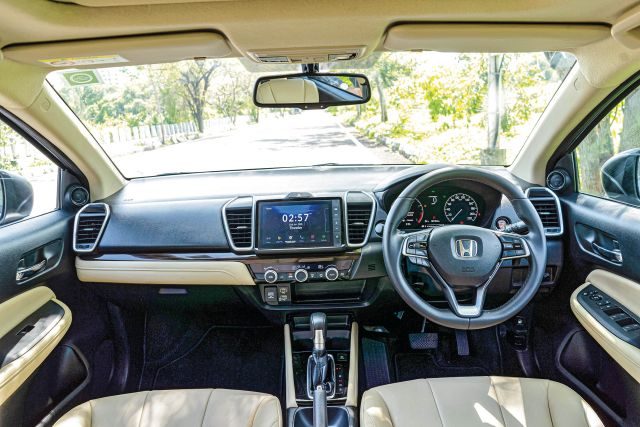
Settling into the driver’s seat the leather-wrapped steering wheel feels nice to hold, while Honda have ditched the three-dial driver interface in favour of a sportier twin-pod design, with white markings and needles on a black background, for easy readability at a glance. At first I thought that I was looking at a pair of analogue clocks, and while this is true of the physical speedometer on the right, the rest of the driver’s instrumentation is actually a TFT screen that displays speed, fuel level, coolant temperature, odometer and the extremely real-looking tachometer on the left. The tacho can be replaced with a number of options, including trip computer, fuel efficiency and G force meter, and warning messages are also displayed in this area. The neat, uncluttered presentation of the dash is something that really appealed to me the moment I got behind the wheel. The wing mirrors have been moved back from the A pillar to reduce the blind-spot in this region, and the driver has clear views all around. Honda have also included a lane watch camera under the left-side wing mirror, which shows you exactly what is just beside the car on the central display whenever you switch on the left turn signal.
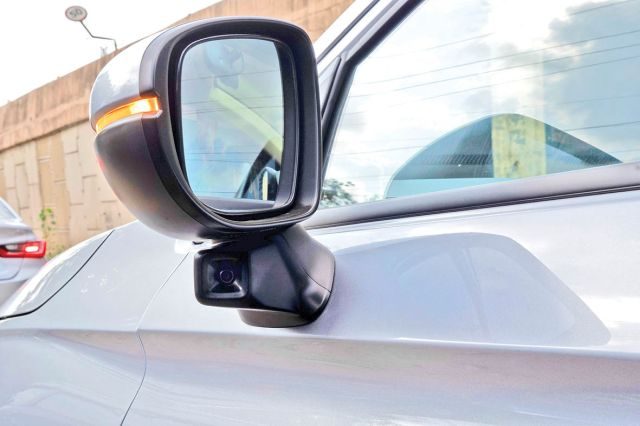
Powering this new Honda City is the latest iteration of Honda’s 1.5-litre, four-cylinder i-VTEC motor breathing through a 16-valve DOHC head. This engine has been carried over from the outgoing model with a couple of tweaks for BS6 compliance, and while peak torque is still 145 Nm at 4,300 rpm, peak power is up from 119 hp to 121 hp at 6,600 rpm. The motor is mated to a seven-speed CVT, with paddleshifts included if you wish to take over manual control of the transmission.
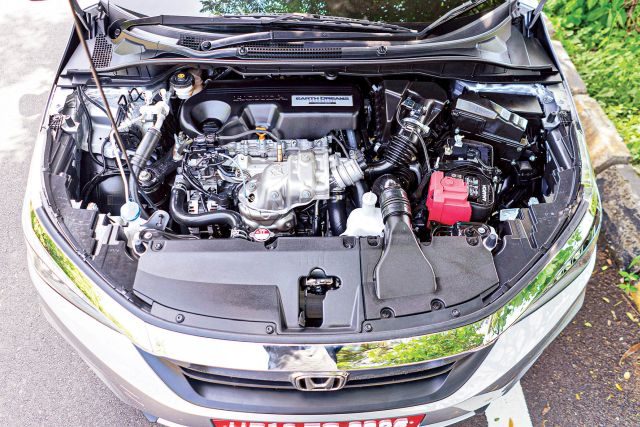
Once on the move the new Honda City feels light on its feet, while the motor seems eager to rev from anywhere above 2,000 rpm. Driving with a light foot will have the CVT keep revs low as you progressively pick up speed, but shift to sport mode and step on the gas to watch the motor spinning up to 6,500 rpm in each ratio, the way only a naturally-aspirated petrol engine knows how to. The rubber-band effect of the CVT is greatly reduced as compared to previous models, and you won’t notice it unless you are really looking for it.
The car also seems extremely planted, with minimal understeer making itself known even when taking curves at high speed. Honda claim to have improved the chassis’ torsional rigidity and refined the ESC with a new Agile Handling Assist (AHA) function that selectively applies the brakes during cornering to keep the car stable. These systems, in conjunction with a well-damped suspension set up, endow the new Honda City with extremely confidence-inspiring handling characteristics.
![]()
For over two decades the Honda City has been a best-seller in its segment, and the 2020 version takes this legacy forward with a new look, refined technology and the versatility to appeal to both, the chauffer-driven executive and the self-driving enthusiast. Honda’s popular sedan isn’t going out of style anytime soon.


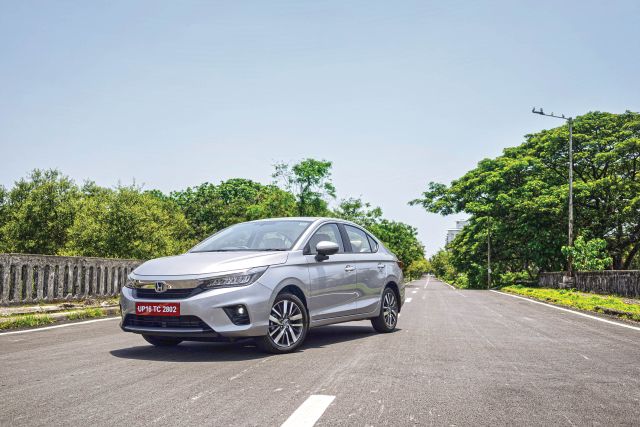


















Leave a Reply